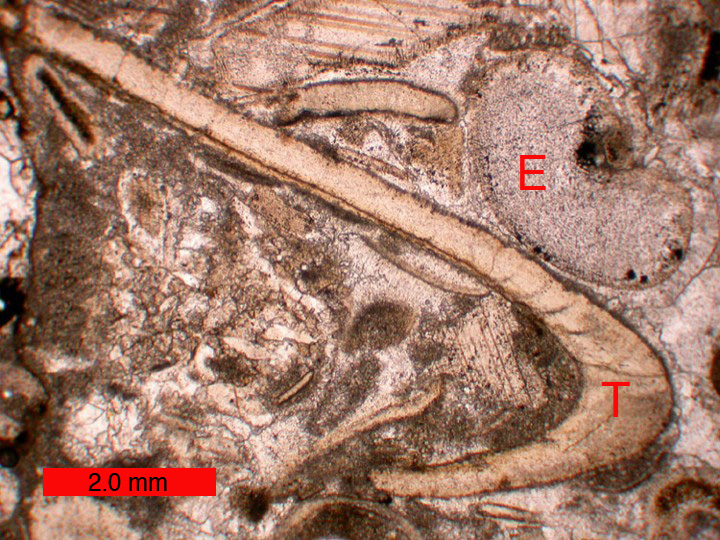My friend Andrew Barton asked me, a bit out of the blue via twitter:
Given a now-earthlike planet terraformed 15 million years ago, which previously resembled an Earth-sized Iapetus or something, how obvious would the pre-terraforming rocks be, or what governs how deep they’d be now?
He also provided a bit more background as to the reason behind the question:
I’m still working out a lot of the details; this involves Esperanza, the terraformed habitable moon of HD 28185 b that was the setting of “The Paragon of Animals” in the March 2013 Analog, and hopefully additional stuff down the line. While tectonically active and geographically varied at present, it was entirely lifeless before the terraforming process began.
I should probably be ashamed to admit it, but I didn’t actually have an idea what Iapetus would be like. And didn’t look it up until this very moment (naughty, naughty) but I don’t think that would have changed the answer I sent him. Which is long and a bit rambling, but I was thinking it through as I went since the question was fairly general.
- How deep do the effects of the terraforming go? If it’s just a matter of soil modification/creation, I wouldn’t really expect most bare rock to be all that altered. If it’s a change to atmospheric chemistry that will completely redefine the way weathering works on the planet, that’s a whole different matter. Also, microbial life does have a profound effect on how any rock that’s exposed to air will degrade (we even see this deep in mines/hydrothermal vents) but did the terraforming, say, completely alter the habitats of the extremophiles?
- How tectonically active is your planet? If you’re getting regular tectonic activity like you see in modern Earth, there’s a good chance that you would get exposures of relatively pristine rock fairly regularly; if there’s a large earthquake that causes a major landscape drop, you’ll get a fault scarp where new rock will be exposed. These aren’t the most common events, but you’d probably get a bit of that happening during 15 million years. Of course, as soon as you expose the fresh rock face to the surface, it will start being effected by the terraforming.
- If you’ve got landscapes with a lot of relief (eg: mountains) then you’ll have an ongoing process of mass wasting (landslides, rockslides, etc) that can expose fresh surfaces.
- Weathering rates will determine a lot, but 15 million years isn’t that much time to redefine a landscape, particularly if you’re just changing the air and water chemistry and not effecting the tectonics at all. Erosion rates are generally less than 1mm/yr (but up to 10mm/yr in places like New Zealand and the Himalayas that have high relief, active mountain building, and plenty of moisture) and one thing you have to consider is that as material is being eroded from the surface, it’s not necessarily going to just expose something pristine beneath it… whatever is right beneath it will probably be in some way chemically weathered by the time you get to it, because water ruins everyone’s life.
- As far as “how deep” the pre-terraforming rocks would be, it’s basically just going to be anything below the zone where your new bacteria/weather can effect it. Which will vary wildly depending on the environment in question. In the classic case of a single non-stacked soil, you could potentially hit bedrock less than 1.5 meters down… but then that bedrock has been subjected to the presumably terraformed water regime. And how deep that water would go would be determined by things like the type of rock, its porosity, and how fractured it is.
- So basically your biggest problem, depending on what exactly the terraforming entailed, is trying to find rocks that have not been touched by air/microbes/water from the new surface.
- Probably your best bet if your people are digging would be to get below the water table if you want completely pristine rocks. In the majority of places, the freshwater table will stop at about 30-35 meters below the surface, but it can go as deep as 370 meters or so.
- Just as a note, for buried pre-terraforming rocks, what you’ll be looking for are sedimentary rocks. Those are the ones that will give you the clearest picture of surface and near surface conditions at the time of their formation (and early diagenesis). And that would presumably provide a very different environmental picture from what currently exists. (Like gosh there are no fossils of any kind in these older rocks…) The good thing is, those rocks have had the entire existence of the planet to form and be buried, so there ought to be plenty of them lurking just below the surface.
Tl;dr: That’s a really complicated question.
Obviously, I’m not the world’s greatest expert on this topic–any other geologists out there have thoughts? Did I get anything completely wrong? Just drop a note in the comments. I’m sure I didn’t think of everything.




